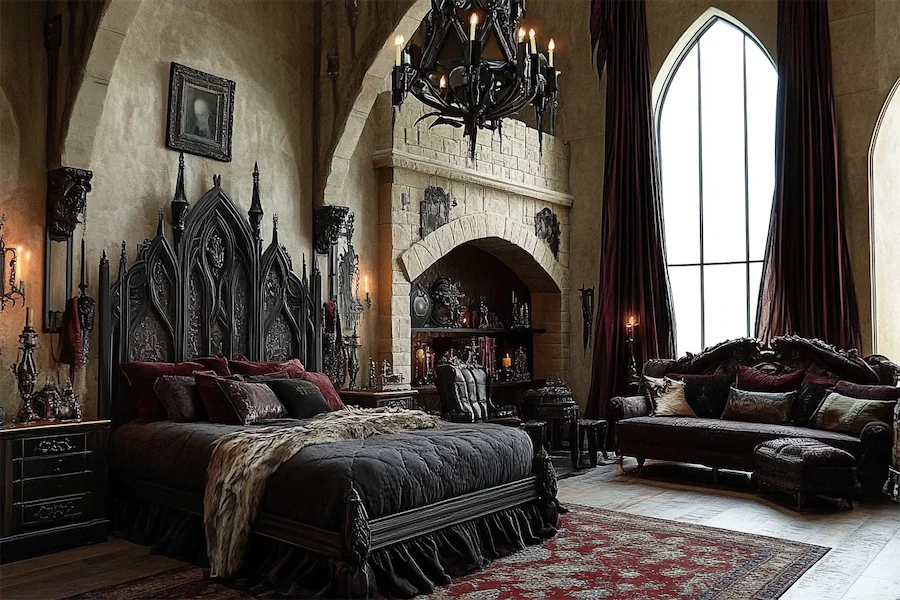A Gothic bedroom design exudes a sense of drama, mystery, and elegance, drawing inspiration from medieval architecture and the Gothic Revival movement. This article explores the history, key features, applications, considerations, and concludes with insights into creating a Gothic-inspired bedroom.
Introduction to Gothic Bedrooms
Gothic bedroom design is characterized by its opulent and dramatic aesthetic, incorporating elements such as pointed arches, intricate carvings, and rich color palettes. This style creates a luxurious and atmospheric retreat, blending historical influences with personal expression.
History and Origins of Gothic Bedrooms
The Gothic architectural style originated in 12th-century Europe, notable for its pointed arches, ribbed vaults, and ornate detailing. During the 19th century, the Gothic Revival movement brought these medieval elements into residential design, influencing interior spaces, including bedrooms. This revival emphasized grandeur and intricate craftsmanship, elements that continue to inspire Gothic-inspired interiors today.
Key Features of Gothic Bedrooms
- Architectural Elements: Incorporate pointed arches, ribbed vaults, and tracery patterns in furniture and decor to reflect Gothic architecture. Elaborately carved wooden furniture, often featuring these motifs, became emblematic of the style.
- Rich Color Palettes: Utilize deep, saturated colors such as black, deep purples, royal reds, and midnight blues to create a dramatic and moody atmosphere. These hues contribute to the opulent feel of the space.
- Luxurious Fabrics: Incorporate rich textiles like velvet, brocade, and damask for bedding, curtains, and upholstery to add texture and depth. These materials enhance the room’s sumptuous ambiance.
- Ornate Furniture: Select furniture pieces with intricate carvings and dark finishes, such as a grand four-poster bed or antique dresser, to serve as focal points in the room. These elements contribute to the historical charm of the design.
- Gothic-Inspired Lighting: Use chandeliers, wall sconces, or candle holders with wrought iron or ornate designs to enhance the moody ambiance. These lighting fixtures add to the room’s dramatic effect.
Applications of Gothic Bedroom Design
- Master Suites: Transforming a master bedroom with Gothic elements creates a luxurious and intimate retreat, offering a unique and personalized space.
- Guest Rooms: Incorporating Gothic design in guest bedrooms provides visitors with a distinctive and memorable experience, showcasing a bold and elegant aesthetic.
- Themed Interiors: For enthusiasts of historical or fantasy themes, a Gothic bedroom can serve as an immersive personal sanctuary, reflecting individual tastes and interests.
Considerations When Designing a Gothic Bedroom
- Balance: While embracing the opulence of Gothic design, it’s essential to balance dark colors and heavy furnishings with adequate lighting and space to prevent the room from feeling overly somber.
- Authenticity: Incorporate genuine antique pieces or high-quality reproductions to achieve an authentic Gothic aesthetic, paying attention to details like carvings and finishes.
- Personalization: Blend Gothic elements with personal touches to ensure the space reflects your style, making it both functional and uniquely yours.
Conclusion
A Gothic bedroom design offers a dramatic and elegant retreat, combining historical architectural elements with luxurious materials and rich color schemes. By thoughtfully incorporating key Gothic features and balancing them with personal touches, you can create a space that is both opulent and inviting.
